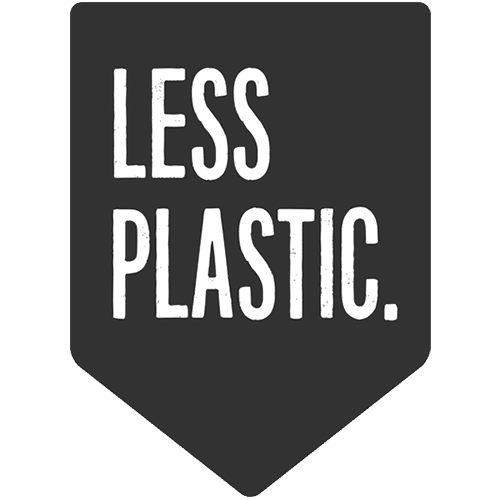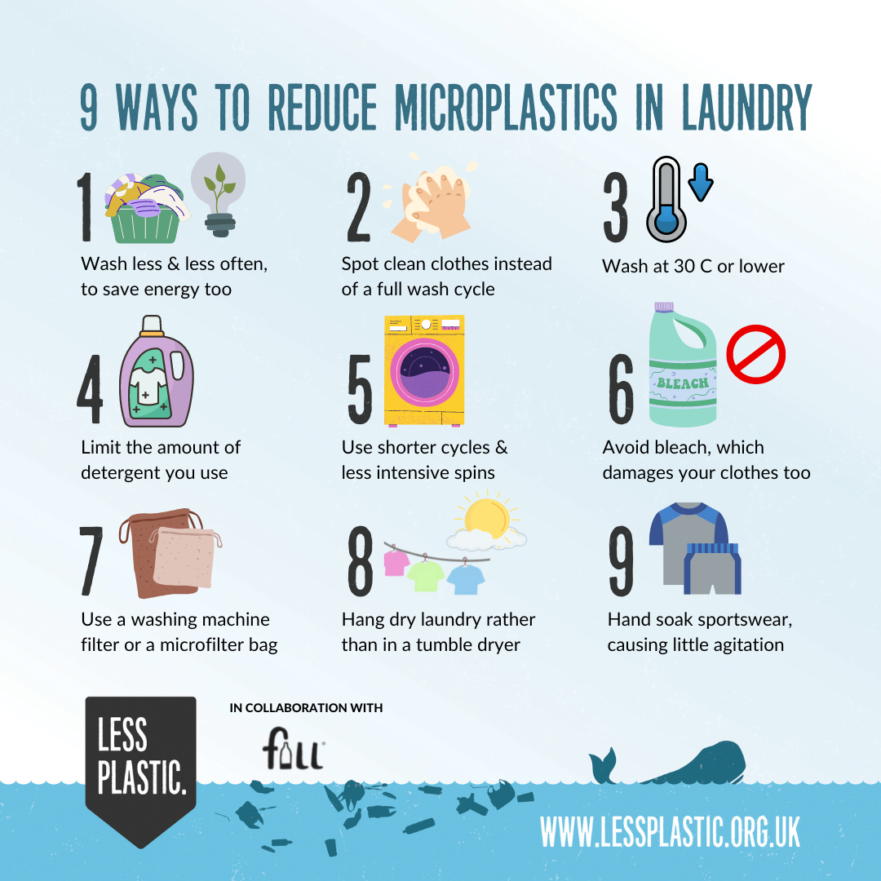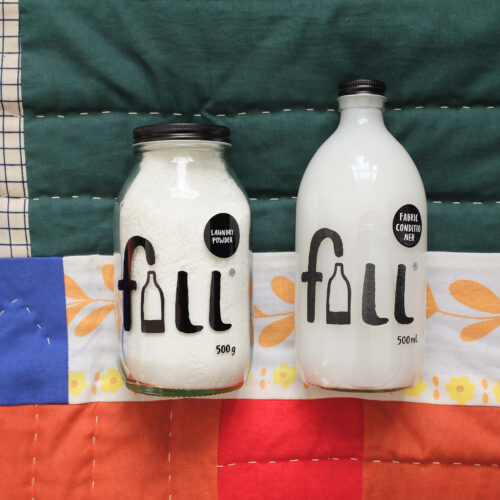Microplastics have become a major environmental concern in recent years, as they continue to accumulate in our oceans and harm wildlife. These tiny plastic particles are found in a variety of everyday products, including clothing and textiles. When we wash our clothes, microplastics are released into the water supply and eventually make their way into our oceans, where they could have devastating effects on marine life and ecosystems – science has yet to reach a consensus.
Microplastics can end up in our food systems too, as they are ingested by marine animals and eventually make their way into the human food chain. The extent of the effects of microplastics on humans and animals is unknown.
Our main mission at Fill Refill is helping folks reduce plastic waste by supplying eco responsible laundry, cleaning and personal care closed loop products. For this blog, we’ve teamed up with our pals at City to Sea to explain a bit more about why micro plastics are an issue. We’ll also look at some practical ways to reduce the amount of microplastics being released in our laundry.
What are microplastics?
Microplastics are small plastic particles that are smaller than 5 mm in size, but they can be over a million times smaller. They can come from a variety of sources, including cosmetics, cleaning products, and clothing. Microplastics in clothing come from synthetic fabrics, such as polyester, which sheds microplastics every time they are washed. These particles are then released into the water supply where they are free to have an impact on the environment for as long as they exist.
Impact of microplastics on the environment:
One of the biggest impacts of microplastics on the environment the we know of is their effect on marine life. These tiny particles can be ingested by marine animals, leading to physical harm and potentially slowing the growth of vulnerable species such as sea turtles. Furthermore, microplastics can attract and concentrate harmful chemicals on their surface, or release some of their own, making them even more dangerous to wildlife.
Microplastics also have a significant impact on our food systems. Marine animals that ingest microplastics can transfer these particles up the food chain, eventually ending up in the human food supply. This highlights the need for us to take action to reduce our use of microplastics and minimize their harm to the environment and our food systems.
Ways to Reduce Microplastics:
Fortunately, there are simple steps that we can take to reduce the amount of microplastics in our laundry. Here are nine ways to minimize their use:
- Wash less overall, and less often.
This not only helps reduce the amount of microplastics in the water supply, but also saves energy and reduces your carbon footprint.
- Where possible spot clean or air your clothes instead of washing.
This can help keep your clothes looking fresh without having to go through a full wash cycle.
- Wash at 30 C or lower.
High-temperature washes release more microplastics, so washing at a lower temperature can help reduce their release.
- Limit the amount of detergent you use; overdosing is real.
Overusing detergent can cause microplastics to shed from your clothes, so it’s important to follow the manufacturer’s recommended amount.
- Use shorter cycles and less intensive spins.
The longer the wash cycle and the more intense the spin, the more microplastics are released into the water supply.
- Avoid bleach.
Bleaches damage your clothes little by little, which can cause microplastics to shed from them.
- Use a washing machine filter, or a microfilter washing bag.
These filters can help trap microplastics before they are released into the water supply.
- Hang laundry to dry.
Tumble drying releases microplastics into the air and might increase later shedding in the wash, so it’s best to hang your clothes to dry whenever possible.
- For sportswear hand soak with as little agitation as possible.
Sportswear is typically made entirely of polyester or nylon. Agitation can cause microplastics to shed, so it’s best to soak sportswear gently by hand.
In conclusion, microplastics are a growing environmental concern, with likely significant impacts on marine life and our food systems. By taking simple steps, we can easily reduce them and prevent them from releasing when doing our laundry. From washing less often to using a washing machine filter, there are many ways to minimise their release into the environment.
For more tips on how to live with less plastic, visit the Plastic-Free Living Hub from City to Sea.



